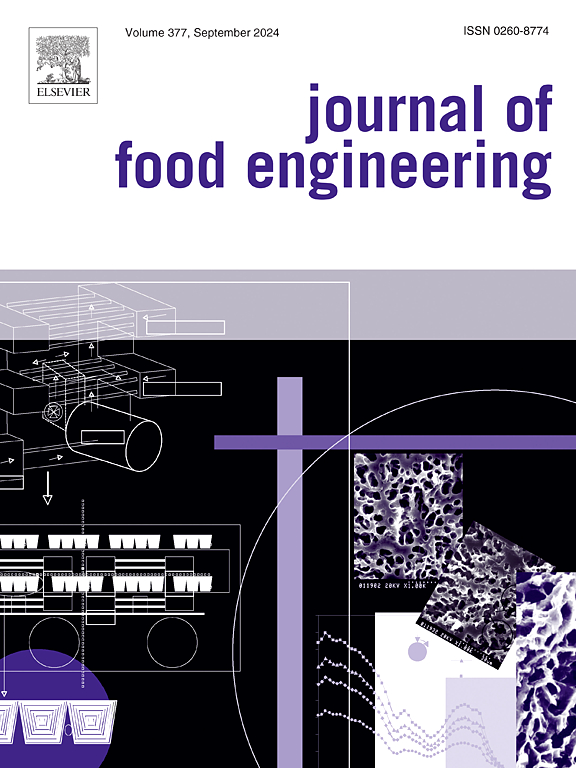Microwave vacuum evaporation of sugar solutions: Analysis of dielectric and microwave absorption properties
IF 5.8
2区 农林科学
Q1 ENGINEERING, CHEMICAL
引用次数: 0
Abstract
Microwave vacuum evaporation (MVE) is a promising alternative over traditional vacuum evaporation, offering rapid evaporation rates and high efficiency. This study investigated the MVE processes and the resulting quality of sugar solutions under varying microwave power densities (10–50 W/g) and vacuum levels (40–80 kPa). The results indicated that a moderate microwave power density (∼30 W/g in this study) was optimal for MVE, balancing both evaporation efficiency and sugar quality. Furthermore, the dielectric properties of the sugar solutions during MVE (over the temperature range of approximately 25-110°C) exhibited a time-dependent decrease in the dielectric constant (ε′), whereas both the dielectric loss factor (ε′′) and loss tangent (tanδε) initially decreased before increasing. Similar values of ε′′ and tanδε were observed for sugar solutions evaporated at high power densities, accounting for the phenomenon of saturated evaporation. The penetration depth, reflection loss, and relative input impedance results indicated that the 4 mm-thick sugar solutions exhibited good microwave absorption during the MVE, except at the initial and final stages, confirming the feasibility of utilizing a liquid film configuration in MVE applications. In conclusion, the analysis of dielectric and microwave absorption properties offers a robust approach for optimizing the MVE process, facilitating the production of high-quality sugars.
微波真空蒸发糖溶液:介电和微波吸收特性分析
微波真空蒸发(MVE)具有蒸发速度快、效率高的优点,是传统真空蒸发的一种很有前途的替代方法。本研究考察了微波功率密度(10-50 W/g)和真空水平(40-80 kPa)下MVE工艺对糖溶液质量的影响。结果表明,在平衡蒸发效率和糖品质的前提下,中等微波功率密度(本研究中为~ 30 W/g)是MVE的最佳选择。此外,在MVE过程中(温度范围约为25-110℃),糖溶液的介电性质随时间的变化呈现出介电常数(ε′)的减小,而介电损耗因子(ε′)和损耗正切(tanδε)均先减小后增大。在高功率密度下蒸发的糖溶液中,ε”和tanδε值相似,说明了饱和蒸发现象。穿透深度、反射损耗和相对输入阻抗结果表明,除了初始和最终阶段外,4 mm厚糖溶液在MVE过程中表现出良好的微波吸收,证实了在MVE应用中使用液膜结构的可行性。总之,介质和微波吸收特性的分析为优化MVE工艺提供了一个可靠的方法,促进了高质量糖的生产。
本文章由计算机程序翻译,如有差异,请以英文原文为准。
求助全文
约1分钟内获得全文
求助全文
来源期刊

Journal of Food Engineering
工程技术-工程:化工
CiteScore
11.80
自引率
5.50%
发文量
275
审稿时长
24 days
期刊介绍:
The journal publishes original research and review papers on any subject at the interface between food and engineering, particularly those of relevance to industry, including:
Engineering properties of foods, food physics and physical chemistry; processing, measurement, control, packaging, storage and distribution; engineering aspects of the design and production of novel foods and of food service and catering; design and operation of food processes, plant and equipment; economics of food engineering, including the economics of alternative processes.
Accounts of food engineering achievements are of particular value.
 求助内容:
求助内容: 应助结果提醒方式:
应助结果提醒方式:


